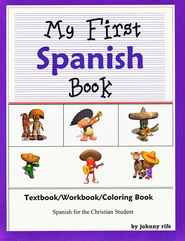My friend Delicia who currently lives in Colombia’s
predominately Black state of Chocó was telling me how she got into a conversation
with an African-American woman who happened to be visiting from Brazil. This
woman insisted that the two maintain a Spanish-speaking conversation. With my being a self-taught Spanish student,
I had to ask Delicia how much Spanish has she had in school before moving to Colombia.
I asked because I personally cannot resist the temptation to fall back on my
English when I’m conversing with another native English speaker. This is the
primary reason why when I’m in a Spanish-speaking country, I go where English
speakers and tourists generally do not go. This keeps my Spanish flowing
without interruptions.
Delicia had 12 years of Spanish before moving to Colombia
(wow!), and even then, she had to get used to not only the Colombian style of
speaking, but the accents and style of the Blacks in Chocó. Just as British and
American English have their differences, and just as various regions and ethnic
groups of the US have their differences, so it is in the Spanish-speaking world.
Although I find myself comfortable mixing with monolingual
Spanish-speakers, as demonstrated in my Latin American travels, I get nervous
and self-conscious around those who speak both Spanish and English, like the
woman Delicia met in Colombia, thus having difficulty gathering my thoughts in
Spanish, not to mention expressing them.
I’ve had bilingual friends who encouraged me to practice my Spanish with
them, and I couldn’t get myself to do it.
However, I have a friend in Perú’s
predominately black District of El Carmen who speaks no English, and I recently
made arrangements to use my Latin American phone card to call him on a weekly
basis to chat. While chatting, he will be correcting my grammar, bringing me up
to date on Peruvian idioms and slang, and of course, helping me to learn some
proper Latin-American manners. My Spanish is at a level where I can do this,
and at a monthly fee that would be equivalent to what I would pay hourly here
in the US for the same type of assistance.







